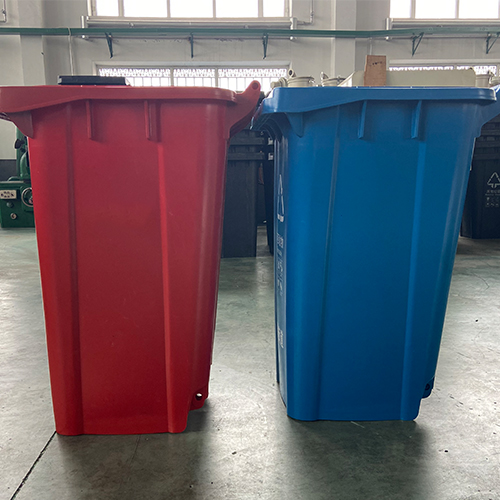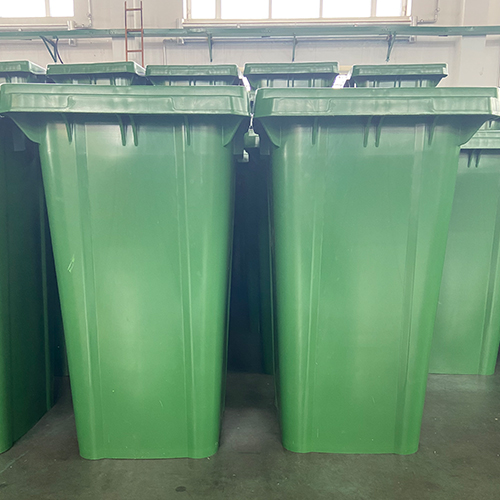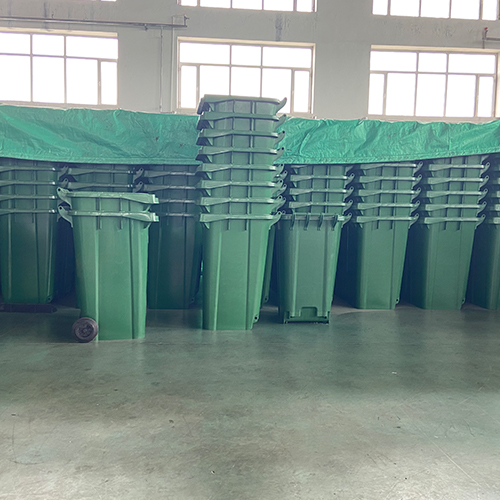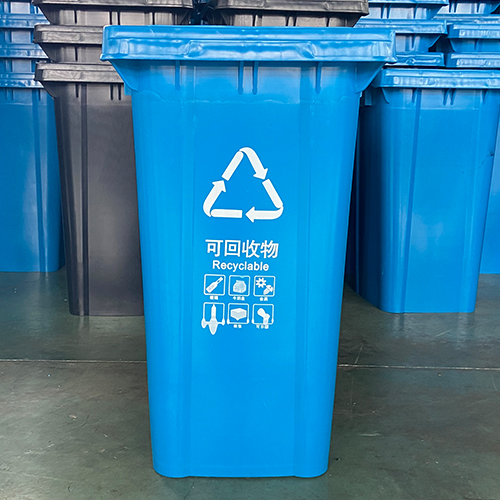
We need to know Tieling 240L plastic trash can There are many kinds of raw materials and plastics. Most of the materials commonly used to make plastic garbage cans are high-density polyethylene (HDPE) or polypropylene (PP). Plastic sanitary garbage cans are generally high-density polyethylene (HDPE). Plastic garbage cans are mostly made by injection molding. The wall thickness of the barrel is not the main reason for determining the toughness of the barrel, but its toughness depends mainly on the materials used, At the same time, it is also associated with molds and injection molding equipment. Tieling 240L plastic trash can The raw materials are evenly distributed during the injection molding process to reduce the formation of local pressure; The design of increasing radian inside the bucket bottom is concave, which naturally reduces the impact on the bucket bottom. The unique design of the outer side of the bucket bottom makes the bottom form a distance of about two centimeters from the ground. It does not directly contact the ground, making the garbage can be placed more smoothly, and can also reduce wear. Generally, the design of the plastic bucket lid is people-oriented, which reduces the impact between the bucket lid and the body, Reduce noise, extend service life, and make the cleaning personnel more comfortable and easy to work.

Tieling 240L plastic trash can There are different colors. According to the national unified mark, the domestic garbage is reclassified into five categories Tieling 240L plastic trash can They are green classified dustbins, gray classified dustbins, blue classified dustbins, red classified dustbins and yellow classified dustbins. Red classified dustbins represent hazardous substances, sometimes marked with orange. Hazardous substances include waste batteries, fluorescent tubes, paints, expired drugs, cosmetics and other non recyclable substances with certain pollution hazards. Green plastic dustbin In the case of combination of multiple plastic dustbins, green represents kitchen waste. Kitchen waste can be used as fertilizer for plant nutrients. After soil burial, it can be decomposed and absorbed by natural microorganisms and plants, playing the role of waste recycling.

Tieling 240L plastic trash can It is simple to process and made of energy-saving materials. In use, it not only reduces the cost but also improves the service life. In terms of cleaning, I don't know whether everyone has paid attention to it. Plastic garbage cans also have a good performance in cleaning. Tieling 240L plastic trash can In many realm interpretations, they can directly show more practical significance. They are inseparable good partners in our life and are widely used in society. 240L plastic trash can brings us different feelings and experiences, and also effectively obtains practical application value. The strength of corrosion resistance shows a more sincere use principle for plastic trash cans.

With the progress of society and the development of science and technology, how to reduce the workload and improve work efficiency has become a common concern of all sectors of society. The environmental health sector is no exception. The sanitation workers who serve the people are busy cleaning and beautifying the city. Why? Tieling 240L plastic trash can More and more popular? So far, many sanitation workers in domestic cities are still using old-fashioned sanitary garbage cans and sanitary vehicles. Due to many factors such as material selection and manufacturing method, the environmental sanitation waste will change color and weaken acid and alkali, thus reducing the service life of environmental sanitation waste under the condition of high working intensity. The poor sealing results in secondary pollution of the environmental sanitation garbage can, which emits bad smell and avoids pedestrians. All kinds of bad environment bring a lot of inconvenience to our staff.






